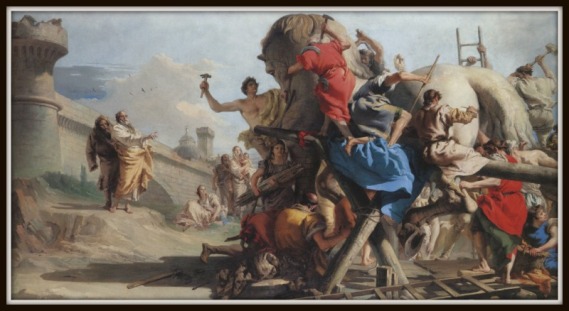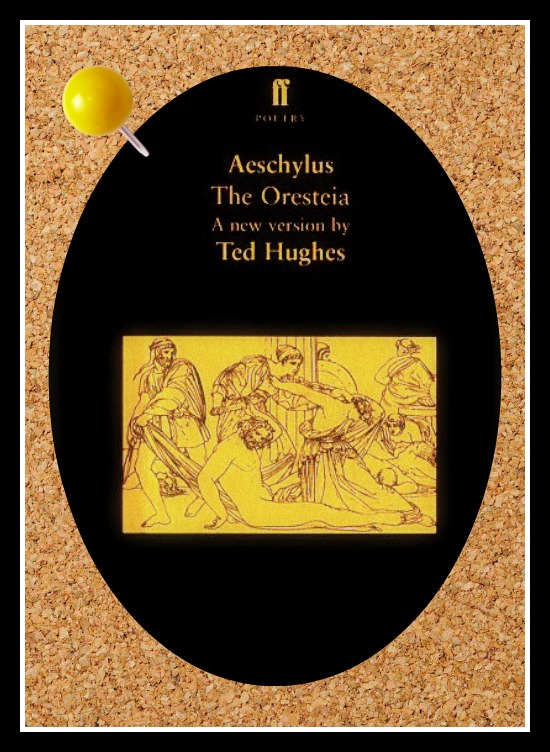►Greek Mythology: “Aphrodite, Goddess of Love and Beauty”:
_______________________________________________________________________________________________________
Aphrodite (In ancient greek Ἀφροδίτη”arisen from the foam”. Roman equivalent: Venus) was the goddess of Love, Beauty and Eternal Youth, arousing desire to gods and humans. In addition, she was connected to the death/rebirth of nature and was also considered a protectress of sailors.
Aphrodite’s symbols were the girdle. the seashell and the mirror. Her sacred animal was the dove.
According to Hesiod’s “Theogony”, she was created from the foam of the waters of the sea, in the fragrant island of Cyprus, when the Titan Cronos slew his father, the major Titan Ouranos, and threw then his genitals into the sea.
Hesiod’s reference to Aphrodite’s having been born from the sea inspired the Renaissance artist Botticelli’s famous painting of the goddess on a giant scallop shell.
_____________________________________________________________________________________________________
____________________________________________________________________________________________________
Homer, on the other hand, said that she was the daughter of Zeus and Dione.
The latter two had hoped to bribe him with power and victory in battle, but Aphrodite offered the love of the most beautiful woman in the world.
This was Helen of Sparta, who became infamous as Helen of Troy when Paris subsequently eloped with her. In the ensuing Trojan War, Hera and Athena were implacable enemies of Troy while Aphrodite was loyal to Paris and the Trojans.
In Homer’s “Iliad”, Aphrodite saves Paris when he is about to be killed in single combat by Menelaus. The goddess wraps him in a mist and spirits him away, setting him down in his own bedroom in Troy. She then appears to Helen in the guise of an elderly handmaiden and tells her that Paris is waiting for her.
Helen recognizes the goddess in disguise and asks if she is being led once more to ruin. For Aphrodite had bewitched her into leaving her husband Menelaus to run off with Paris. She dares to suggest that Aphrodite go to Paris herself.
Suddenly furious, the goddess warns Helen not to go too far, lest she be abandoned to the hatred of Greeks and Trojans alike.
____________________________________________________________________________________________________
_________________________________________________________________________________________________
Another case in which Aphrodite came to the aid of a mortal hero also happened to involve golden apples. When the heroine Atalanta agreed to wed who beat her in a foot race, Aphrodite favored Hippomenes with a peck of golden fruit.
By strewing these apples on the race course, Hippomenes caused Atalanta to become distracted, reason why she lost the race.
_______________________________________________________________________________________________________
_______________________________________________________________________________________________________
In a different ocassion, Zeus punished Aphrodite for beguiling her fellow gods into inappropriate romances.
He caused her to become infatuated with the mortal Anchises. That’s how she came to be the mother of Aeneas. She protected this hero during the Trojan War and its aftermath, when Aeneas quested to Italy and became the mythological founder of a line of Roman emperors.
A minor Italic goddess named Venus became identified with Aphrodite, and that’s how she got her Roman name. It is as Venus that she appears in the “Aeneiad”, Virgil’s epic of the founding of Rome.
In the “Iliad”, Homer tells how Aphrodite intervened in battle to save her son Aeneas, who was obviously, a Trojan ally.
The Greek hero Diomedes, who had been on the verge of killing Aeneas, attacked the goddess herself, wounding her on the wrist. Aphrodite promptly dropped Aeneas, who was rescued by Apollo, another Olympian sponsor of the Trojan.
______________________________________________________________________________________________________
____________________________________________________________________________________________________
►”The Aphrodite of Cnidos” by Praxiteles and Other Sculptures of Aphrodite based on it:
____________________________________________________________________________________________________
“The Aphrodite of Cnidos” or “Cnidian Aphrodite” was one of the most famous works of the ancient greek sculptor Praxiteles (4th century BC, Classic Period).
The statue became famous for its beauty, meant to be appreciated from every angle, and for being the first life-size representation of the nude female form.
Praxiteles probably used the courtesan Phryne as a model.
The Cnidian Aphrodite has not survived. Possibly the statue was removed to Constantinople and was lost in a fire.
The original statue supposedly depicted Aphrodite as she prepared for the ritual bath that restored her purity (not virginity), discarding her drapery in her left hand, while modestly shielding herself with her right hand.
_______________________________________________________________________________________________________
►Slideshare: Most Well Known Variations on “The Aphrodite of Cnidos”:
(Note: Click on any sculpture for further technical details on it)

__________________________________________________________________________________________________
__________________________________________________________________________________________________
►Links Post:
http://www.mythweb.com/encyc/entries/aphrodite.html
https://ladysighs.wordpress.com/2015/02/01/greek-9-aphrodite/
http://gogreece.about.com/cs/mythology/a/mythaphrodite.htm
http://ancienthistory.about.com/cs/grecoromanmyth1/p/Aphrodite.htm
http://www.greek-gods.info/greek-gods/aphrodite/aphrodite-paintings.php
https://micromythos.wordpress.com/2015/02/01/the-weirdest-births-of-mythology/
http://en.wikipedia.org/wiki/Aphrodite_of_Cnidus
_______________________________________________________________________________________________________
_______________________________________________________________________________________________________





























